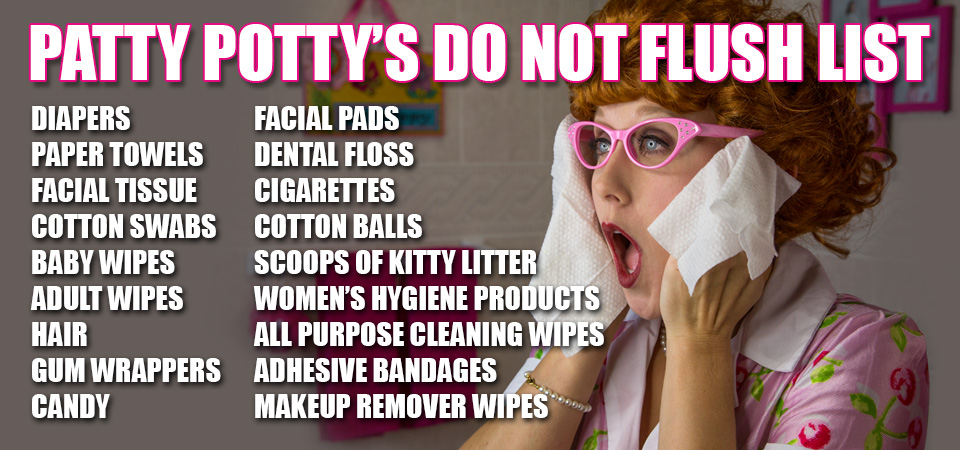Patty Potty: My Do Not Flush List!
People are flushing all kinds of things down the toilet!
It’s not a trash can, you know!
 Some paper products and wipes are advertised as ‘flushable’ but they aren’t. Sure, they will flush down, but they won’t flush OUT. Wipes won’t decompose… they get caught up in wastewater treatment plant screens and filters — and that costs money to clear and repair!
Some paper products and wipes are advertised as ‘flushable’ but they aren’t. Sure, they will flush down, but they won’t flush OUT. Wipes won’t decompose… they get caught up in wastewater treatment plant screens and filters — and that costs money to clear and repair!
Please help protect water quality and our environment and prevent costly water treatment plant repairs, as well!
Who is Patty Potty?
Created by Russ Lambert, the Co-Founder and Creative Director, of Save Water Texas Coalition, Patty is a 1950’s housewife… somewhat prissy, often bossy, and completely in charge of her home and family. She is a little uncomfortable having to talk about toilet topics but overcomes her reluctance because her mother taught her to tackle issues head on. Patty grew up in an era in which talking about bathroom practices was strictly taboo…and certainly not to be discussed in mixed company.
On the DO NOT FLUSH list are several products the names of which no proper woman would ever allow to pass her lips – like condoms and female sanitary products. Kids, on the other hand, have always loved “potty talk” — just not in front of their mothers!
Patty Potty’s DO NOT FLUSH LIST:
- diapers
- paper towels
- facial tissue
- cotton swabs
- baby wipes
- adult wipes
- hair
- gum wrappers
- candy wrappers
- facial pads
- dental floss
- cigarettes
- cotton balls
- scoops of kitty litter
- women’s hygiene products
- all purpose cleaning wipes
- adhesive bandages
- makeup remover wipes
For more information on Patty Potty and her water saving tips, please visit PattyPotty.com.

